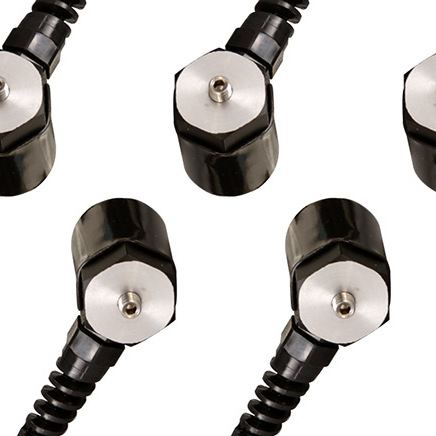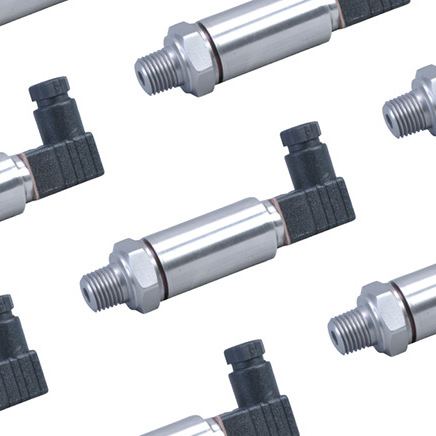Can a Pressure Transducer be Cleaned?
Pressure sensors may undergo contamination from the environment around it or from the working fluid that it measures. Contamination can indeed affect the accuracy of pressure transducers and this is why it is important to clean them at regular intervals.
Cleaning pressure transducer is a task that requires care and attention because you are likely to damage the sensor if you are not careful. The best method to clean a transducer is to wipe it clean with cotton dipped in alcohol. If there is no grease on the pressure transducer, then lukewarm water is the way to go.
You can also wash the sensor using alcohol or water. Be sure to give the transducer enough time to dry. Do not submerge the transducer in any liquid. Do not leave any grease marks on the contact and always cover the contacts while cleaning the transducer.
Can a Pressure Transducer be Repaired?
Pressure transducers are repairable. However, it is best left to experts. DIY repair jobs don’t fit well with pressure transducers. Strain gauges or pressure crystals within the transducers are very sensitive to outside forces. Hence, they require specialized tools and experienced professionals.
If your pressure transducer is within the warranty period, it is best to return the sensor to the manufacturer. There are also reliable third party services that you can entrust the transducer with once the warranty period is over.
Pressure Transducer vs Pressure Switch
A pressure transducer and pressure switch have their similarities as both these devices can measure pressure. However, the difference is that a pressure switch has an additional feature that enables it to ‘switch’ control when the pressure goes high or below a certain limit. This switch function can be anything from sounding an alarm to the shutting off the valves.
But do not think that this makes pressure switches more advanced than pressure transducers. Pressure transducers are still significantly accurate than pressure switches.
Hence, pressure switches should not be your choice for taking pressure measurement, these are usually meant to safeguard the setups.
Pressure Transducer vs Pressure Gauge
A pressure transducer is an electromechanical device designed to measure pressure with a high degree of accuracy. Pressure transducers use a combination of mechanical and electrical components to create voltage variances that correlate to the load applied to the transducer.
A pressure gauge is a mechanical device that was used to measure pressure before pressure transducers became common. They are still in use because of their low cost and easy setup. The prime example of a pressure gauge is a Bourdon gauge.
Pressure gauges don’t require electricity to take readings. However, these gauges are less useful in an environment that is prone to vibrations or condensation as these factors can affect the accuracy of the gauge. Filled pressure gauges were made to resolve these shortcomings of normal pressure gauges.
Pressure Transducer vs Pressure Transmitter
A pressure transducer uses a pressure sensor to measure pressure. The data collected by the pressure transducer is then sent to the controller or PLC using wires that connect the transducer to the controller. However, in some setups, the distance between the controller and the transducer makes it impossible for the small voltage to travel beyond a certain limit.
Pressure transmitters overcome this issue. They do so by pairing the pressure sensor with a signal conditioner to internally amplify the signals coming from the sensor. Most modern pressure transmitters also come with a display integrated with its housing that shows the pressure readings.
Pressure Transducer vs Absolute
A pressure transducer gauge measures the pressure with reference to the atmospheric pressure or ambient pressure.
An absolute pressure transducer measures pressure with reference to vacuum. The other end of the process side of an absolute pressure transducer remains sealed off with a vacuum chamber. This helps the transducer to give readings not influenced by the ambient pressure. Absolute pressure transducers are useful in cases where there is a need for high accuracy. These are also useful in scenarios where we have to measure pressure below the atmospheric pressure.
Pressure Transducer Span vs Range
The pressure transducer range is the lowest to the maximum value that the transducer can measure with high accuracy. If a pressure transducer can measure between 200 psi and 1000 psi, then we are specifying its range.
The span of a pressure transducer is the difference between the maximum and minimum value a pressure transducer can measure. In other words, it is the difference between the maximum and minimum values specified in the range. If a pressure transducer can measure between 200 psi and 1000psi, then the span of the transducer is 800 psi.
- What is a pressure transducer?
- How do pressure transducers work?
- Pressure sensor vs transducer
- Custom pressure transducers
- Pressure transducers FAQ
- Selecting a pressure sensor
- How to specify
- Installing a pressure transducer
- Troubleshooting
- Selecing an amplifier
- Selecing a controller
- Selecing a data logger

